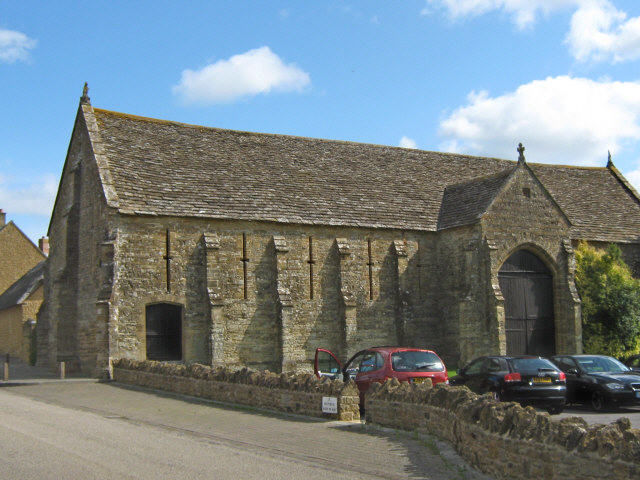|
Alton, Leicestershire
Alton is a deserted medieval village between Coalville and Ashby-de-la-Zouch, in North West Leicestershire, England. The earliest documentation of the village is found in the Domesday Book where it appears as ''Heletone''. The land was rented out to someone by Hugh de Grandmesnil, and had a total value of 60 shillings. There were 25 villagers, 1 being a man at arms and 4 smallholders. There were 8 ploughs, 1 mill, 4 acres of meadow, woodland 1 league long. The name is probably derived from ''ald'', and the suffix ''tūn'', meaning "old settlement".Watts, Victor ''et al.,'' (2004) ''The Cambridge Dictionary of Place Names'', Cambridge University Press, Cambridge. It is one of only four villages in Leicestershire that seems to have been deserted as a result of grange formation, the others being Dishley, Ringlethorp and Weston. The most important possessor of granges in Leicestershire was the Cistercian Garendon Abbey Garendon Abbey was a Cistercian abbey located between Shep ... [...More Info...] [...Related Items...] OR: [Wikipedia] [Google] [Baidu] |
Deserted Medieval Village
In the United Kingdom, a deserted medieval village (DMV) is a former settlement which was abandoned during the Middle Ages, typically leaving no trace apart from earthworks or cropmarks. If there are fewer than three inhabited houses the convention is to regard the site as deserted; if there are more than three houses, it is regarded as a shrunken medieval village. There are estimated to be more than 3,000 DMVs in England alone. Other deserted settlements Not all sites are medieval: villages reduced in size or disappeared over a long period, from as early as Anglo-Saxon times to as late as the 1960s, due to numerous different causes. Reasons for desertion Over the centuries, settlements have been deserted as a result of natural events, such as rivers changing course or silting up, flooding (especially during the wet 13th and 14th centuries) as well as coastal and estuarine erosion or being overwhelmed by windblown sand. Many were thought to have been abandoned due to th ... [...More Info...] [...Related Items...] OR: [Wikipedia] [Google] [Baidu] |
Coalville
Coalville is an industrial town in the district of North West Leicestershire, Leicestershire in the East Midlands of England, with a population at the 2011 census of 34,575. It lies on the A511 trunk road between Leicester and Burton upon Trent, close to junction 22 of the M1 motorway where the A511 meets the A50 between Ashby-de-la-Zouch and Leicester. It borders the upland area of Charnwood Forest to the east of the town. Coalville is twinned with Romans-sur-Isère in southeastern France. History Coalville is a product of the Industrial Revolution. As its name indicates, it is a former coal mining town and was a centre of the coal-mining district of north Leicestershire. It has been suggested that the name may derive from the name of the house belonging to the founder of Whitwick Colliery: 'Coalville House'. However, conclusive evidence is a report in the ''Leicester Chronicle'' of 16 November 1833: 'Owing to the traffic which has been produced by the Railway and Ne ... [...More Info...] [...Related Items...] OR: [Wikipedia] [Google] [Baidu] |
Ashby-de-la-Zouch
Ashby-de-la-Zouch, sometimes spelt Ashby de la Zouch () and shortened locally to Ashby, is a market town and civil parish in the North West Leicestershire district of Leicestershire, England. The town is near to the Derbyshire and Staffordshire borders. Its 2001 census population of 11,410 rose to 12,370 in 2011. The castle in the town was an important fort in the 15th–17th centuries. In the 19th century the town's main industries were ribbon manufacture, coal mining, and brickmaking. The civil parish includes the hamlets of Shellbrook to the west and Boundary to the north-west. Swadlincote, Burton upon Trent, Melbourne and Coalville are within , with Derby due north. Ashby lies at the heart of The National Forest, about south of the Peak District National Park, on the A42 between Tamworth and Nottingham. In 2018, Ashby Market Street was named "Best Shopping Experience", and in 2019 it made the final of the rising-star category for UK high streets. History The tow ... [...More Info...] [...Related Items...] OR: [Wikipedia] [Google] [Baidu] |
North West Leicestershire
North West Leicestershire is a local government district in Leicestershire, England. The population of the Local Authority at the 2011 census was 93,348. Its main towns are Ashby-de-la-Zouch, Castle Donington, Coalville and Ibstock. The district contains East Midlands Airport, which operates flights to the rest of Britain and to various places in Europe. It is also notable as the location of Castle Donington and Donington Park, a grand-prix circuit and a major venue for music festivals. The district is represented in the UK Parliament by the constituency of the same name. The area has a long history of mineral extraction, with coal, brick clay, gravel and granite amongst the products. All the deep coal mines in the area have closed, but opencast mining still continues. The district was formed in 1974 by a merger of Ashby de la Zouch Urban District, Ashby Woulds Urban District, Coalville Urban District, Ashby de la Zouch Rural District, Castle Donington Rural Distric ... [...More Info...] [...Related Items...] OR: [Wikipedia] [Google] [Baidu] |
Domesday Book
Domesday Book () – the Middle English spelling of "Doomsday Book" – is a manuscript record of the "Great Survey" of much of England and parts of Wales completed in 1086 by order of King William I, known as William the Conqueror. The manuscript was originally known by the Latin name ''Liber de Wintonia'', meaning "Book of Winchester", where it was originally kept in the royal treasury. The '' Anglo-Saxon Chronicle'' states that in 1085 the king sent his agents to survey every shire in England, to list his holdings and dues owed to him. Written in Medieval Latin, it was highly abbreviated and included some vernacular native terms without Latin equivalents. The survey's main purpose was to record the annual value of every piece of landed property to its lord, and the resources in land, manpower, and livestock from which the value derived. The name "Domesday Book" came into use in the 12th century. Richard FitzNeal wrote in the '' Dialogus de Scaccario'' ( 1179) that the bo ... [...More Info...] [...Related Items...] OR: [Wikipedia] [Google] [Baidu] |
Hugh De Grandmesnil
Hugh de Grandmesnil (1032 – 22 February 1098), (known in French as ''Hugues'' and Latinised as ''Hugo de Grentmesnil'', aliter ''Grentemesnil'', etc.), is one of the proven companions of William the Conqueror known to have fought at the Battle of Hastings in 1066. Subsequently, he became a great landowner in England. He was the elder son of Robert I of Grandmesnil by his wife Hawise d'Echaffour, a daughter of Giroie, Lord of Échauffour. His younger brother was Robert II of Grandmesnil. Following the Norman Conquest King William the Conqueror gave Hugh 100 manors in recompense for his service, sixty-five of them in Leicestershire, in the Midlands. He was appointed Sheriff of Leicestershire and Governor of Hampshire. Hugh's landholdings are listed in the Domesday Book of 1086 (''Domesday Book: A Complete Transliteration''. London: Penguin, 2003. p 652-6). Origins The Grandmesnil family achieved prominence in about 1050 in central Normandy, where the family became famous ... [...More Info...] [...Related Items...] OR: [Wikipedia] [Google] [Baidu] |
Monastic Grange
Monastic granges were outlying landholdings held by monasteries independent of the manorial system. The first granges were owned by the Cistercians and other orders followed. Wealthy monastic houses had many granges, most of which were largely agricultural providing food for the monastic community. A grange might be established adjacent to the monastery but others were established wherever it held lands, some at a considerable distance. Some granges were worked by lay-brothers belonging to the order, others by paid labourers. Granges could be of six known types: agrarian, sheep or cattle farms, horse studs, fisheries and industrial complexes. Industrial granges were significant in the development of medieval industries, particularly iron working. Description Granges were landed estates used for food production, centred on a farm and out-buildings and possibly a mill or a tithe barn. The word grange comes through French from Latin meaning a granary. The granges might be lo ... [...More Info...] [...Related Items...] OR: [Wikipedia] [Google] [Baidu] |
Cistercian
The Cistercians, () officially the Order of Cistercians ( la, (Sacer) Ordo Cisterciensis, abbreviated as OCist or SOCist), are a Catholic religious order of monks and nuns that branched off from the Benedictines and follow the Rule of Saint Benedict, as well as the contributions of the highly-influential Saint Bernard of Clairvaux, known as the Latin Rule. They are also known as Bernardines, after Saint Bernard himself, or as White Monks, in reference to the colour of the "cuculla" or cowl (choir robe) worn by the Cistercians over their habits, as opposed to the black cowl worn by Benedictines. The term ''Cistercian'' derives from ''Cistercium,'' the Latin name for the locale of Cîteaux, near Dijon in eastern France. It was here that a group of Benedictine monks from the monastery of Molesme founded Cîteaux Abbey in 1098, with the goal of following more closely the Rule of Saint Benedict. The best known of them were Robert of Molesme, Alberic of Cîteaux and the Engl ... [...More Info...] [...Related Items...] OR: [Wikipedia] [Google] [Baidu] |
Shepshed
Shepshed (often known until 1888 as ''Sheepshed'', also ''Sheepshead'' – a name derived from the village being heavily involved in the wool industry) is a town in Leicestershire, England with a population of 13,505 at the 2011 census. It is part of the borough of Charnwood local authority, where Shepshed is the second biggest settlement after the town of Loughborough. The town is twinned with the Parisian suburb of Domont. History Origins The town originally grew as a centre for the wool trade. However, since the construction of the M1 motorway nearby, it has become a dormitory town for Loughborough, Leicester, Derby and Nottingham. It was officially a village until recently and claimed to be Britain's largest, and also claimed to have the highest number of pubs per head of population in the country. As of 2021, however, it is home to only twelve public houses. There has been controversy about the origin of the name of the town. The earliest form is ''Scepeshefde Reg ... [...More Info...] [...Related Items...] OR: [Wikipedia] [Google] [Baidu] |



